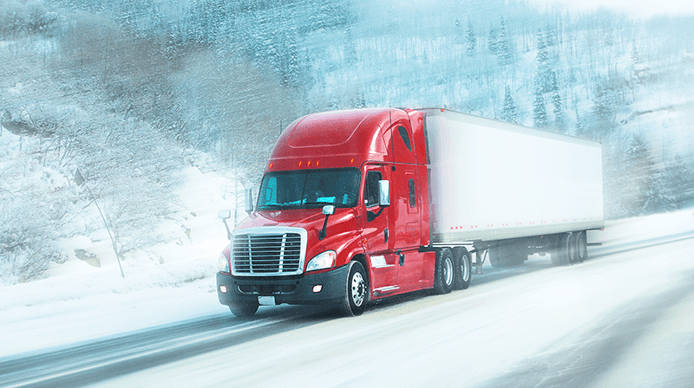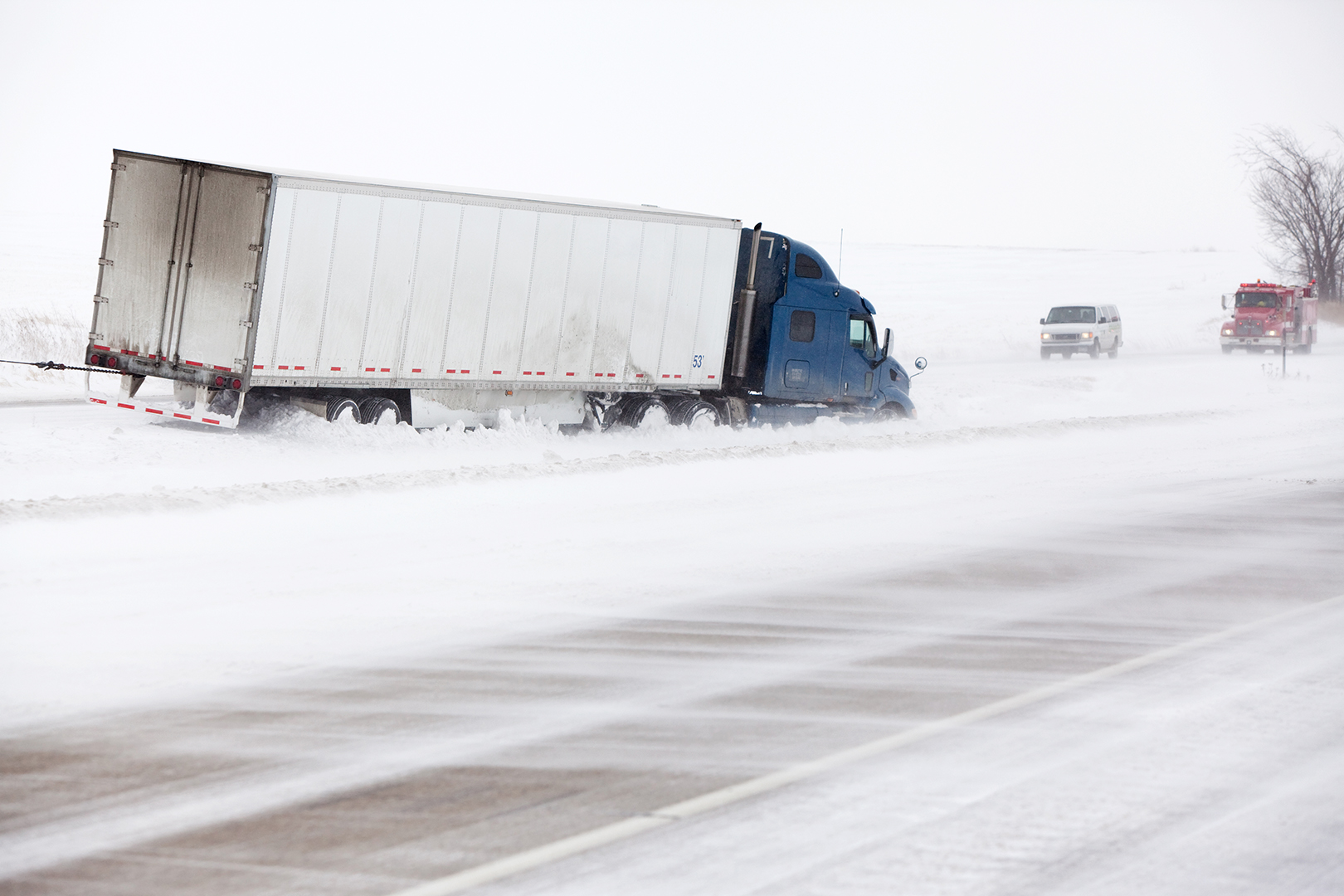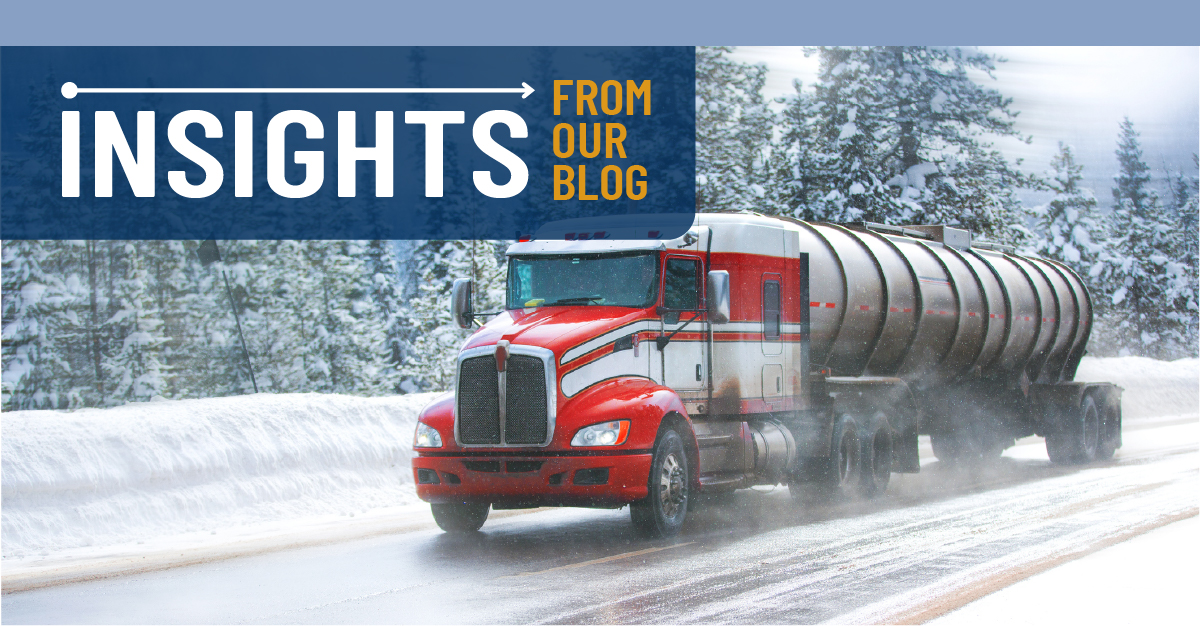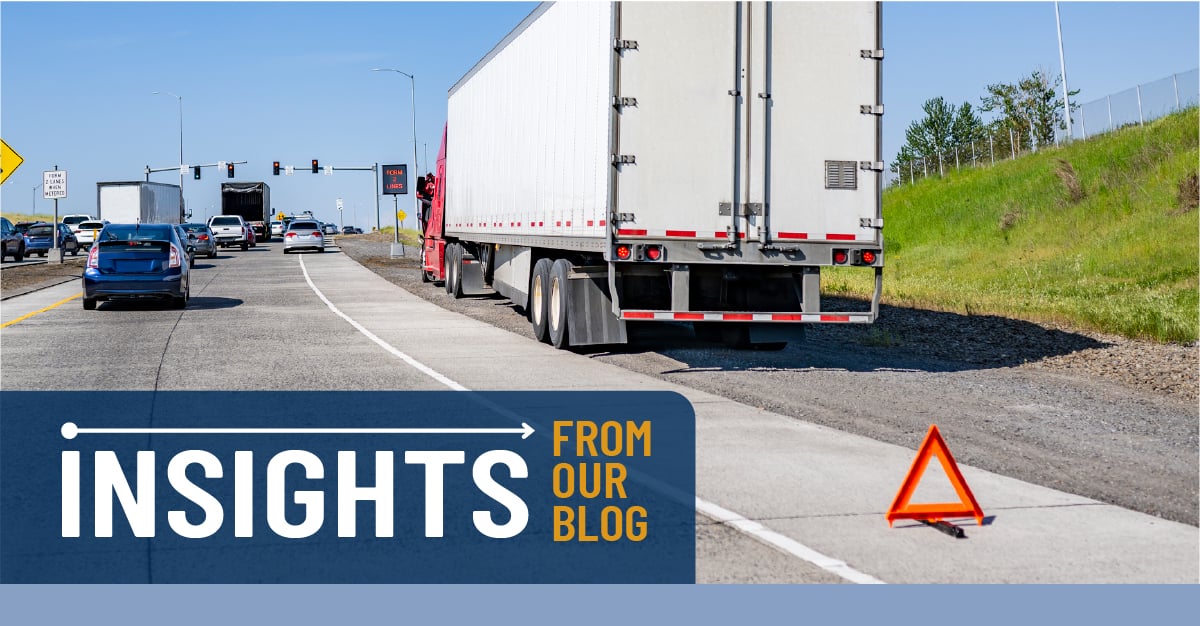Time to Discuss Winter Driving Conditions

Winter is back, and truck drivers must deal with extreme weather and winter driving conditions. Ice, snow, high winds, poor visibility, frigid temperatures, and other hazards greatly impact driver safety.
These factors can also lead to a critical crash, such as a rollover, jackknife, or lane departure. Critical crashes can have negative repercussions throughout the organization and severely disrupt operations.
That is why the time is now for operations staff to remind drivers of winter driving hazards and protective driving techniques needed to prevent a serious loss.
Here are some key points operations staff should cover with drivers.
Safe Driving In Winter
Four areas a driver should always prepare for are vehicle inspections, maintenance, route planning, and roadside emergencies. Two important areas are conducting thorough vehicle inspections before, during, and after a trip and resolving any maintenance issues promptly.
Great West Casualty Company offers insureds free vehicle inspection checklists to help drivers cover every area of the vehicle. Also, drivers should plan their routes by watching weather reports and reviewing state chain laws to determine which requirements will be applicable.
Operations staff can help relieve stress by routing drivers away from hazardous areas, communicating up-to-date weather changes, and working with shippers and receivers in the event of roadside delays.
Finally, remind drivers to pack cold-weather clothing, extra food and water, and other emergency supplies in the event they get caught out in the elements.
Essential 7 Driving Techniques
When road conditions deteriorate, it is up to the driver (with the support of operations) to make a value-based decision to park the truck if conditions are too hazardous to drive in. Likewise, operations can help drivers by reminding them of the Essential 7 Driving Techniques:
-
Avoid distractions – Drivers should get plenty of sleep to avoid fatigue, put away cells phones before driving, and wear polarized sunglasses to reduce sun glare, etc.
-
Maintain proper following distance – Drivers should maintain a minimum of six seconds following distance in normal conditions and add an additional second for each hazard present, such as snow or high winds.
-
Observe proper speed for conditions – Drivers should slow down as road conditions worsen, and at the very least, reduce speed to 2-3 mph below the flow of traffic, not to exceed the posted speed limit.
-
Be attentive to the road ahead – Drivers should watch for slowing traffic ahead as well as other hazards, such as deer, potholes, or road construction.
-
Maintain one lane – Drivers should avoid lane-hopping and other aggressive driving behaviors that can lead to a jackknife, lane change crash, or cause others to lose control.
-
React properly to hazards – Drivers should practice being mentally focused on how to react to a hazardous situation, such as how to recover from a jackknife.
Call to Action
-
Communicate weather reports to drivers to keep them informed of potentially hazardous areas
-
Provide drivers with a checklist of essential emergency roadside items (i.e. clothing, food, water, etc.)
-
Train each driver using Great West’s Value-Driven® Driving – Preventing Loss of Control Crashes video
The information in this article is provided as a courtesy of Great West Casualty Company and is part of the Value-Driven® Company program. Value-Driven Company was created to help educate and inform insureds so they can make better decisions, build a culture that values safety, and manage risk more effectively. To see what additional resources Great West Casualty Company can provide for its insureds, please contact your safety representative, or click below to find an agent.
© Great West Casualty Company 2021. The material in this publication is the property of Great West Casualty Company unless otherwise noted and may not be reproduced without its written consent by any person other than a current insured of Great West Casualty Company for business purposes. Insured should attribute use as follows: “© Great West Casualty Company 2018. Used with permission by Great West Casualty Company.”
This material is intended to be a broad overview of the subject matter and is provided for informational purposes only. Great West Casualty Company does not provide legal advice to its insureds, nor does it advise insureds on employment-related issues. Therefore, the subject matter is not intended to serve as legal or employment advice for any issue(s) that may arise in the operations of its insureds. Legal advice should always be sought from the insured’s legal counsel. Great West Casualty Company shall have neither liability nor responsibility to any person or entity with respect to any loss, action, or inaction alleged to be caused directly or indirectly as a result of the information contained herein.




